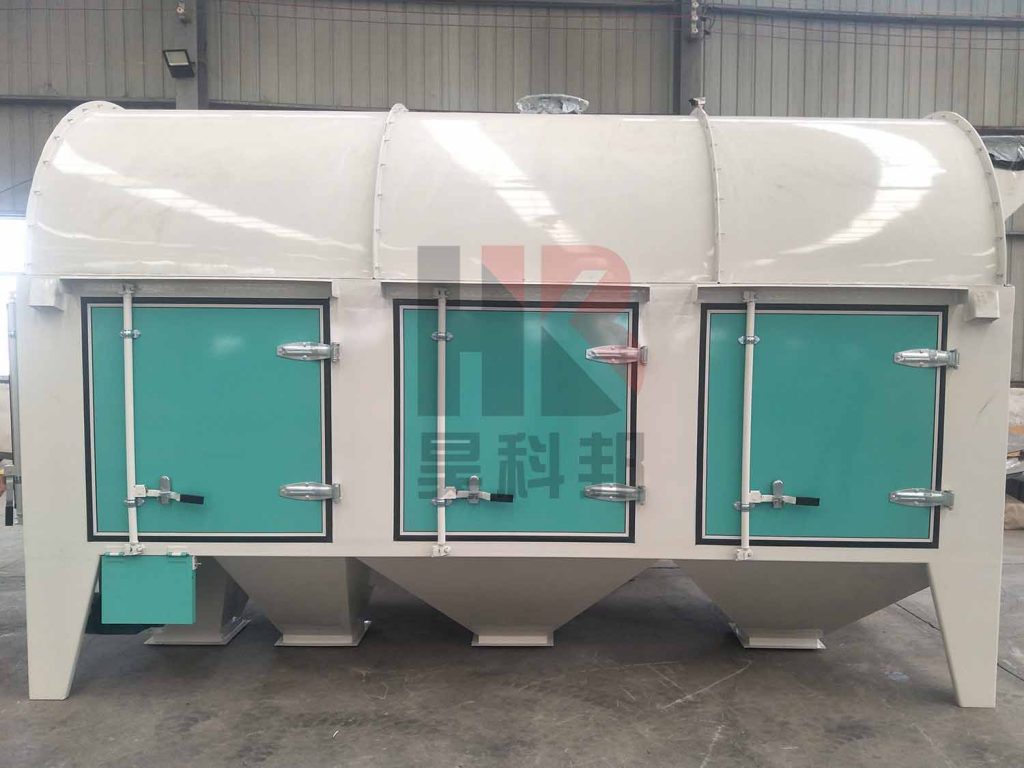The drum screen mainly consists of a drum, screen mesh, drive mechanism, inlet, and outlet. This article will delve into the structure of the drum screen to help us better understand and apply this important device.

The drum is the core component of the drum screen. It is typically made of stainless steel or high-strength engineering plastic, offering excellent wear and corrosion resistance for long-term stable operation. The shape and size of the drum are designed based on grain screening needs, ensuring grains can tumble and disperse fully inside.
The rotation speed of the drum is a key parameter. A proper speed allows grains to form an optimal movement state inside the drum. This ensures fine particles and impurities pass through the screen mesh, while grains meeting the particle size requirements move smoothly toward the outlet.
The screen mesh is another key component of the drum screen, directly determining the screening precision. The mesh aperture can be customized based on different grain types and screening requirements to meet diverse needs.
The screen mesh is usually made of stainless steel, providing good wear and corrosion resistance. The installation method of the screen mesh also affects the screening effect. Typically, the screen mesh is installed in a spiral pattern inside the drum. This extends the grains' residence time on the mesh, enhancing screening efficiency.
The drive mechanism provides power support for the drum screen, usually consisting of a motor and a reducer. The motor transmits power to the drum's shaft via a belt or chain, causing the drum to rotate. The power and torque of the drive mechanism should be selected based on the drum's size and load to ensure stable rotation.